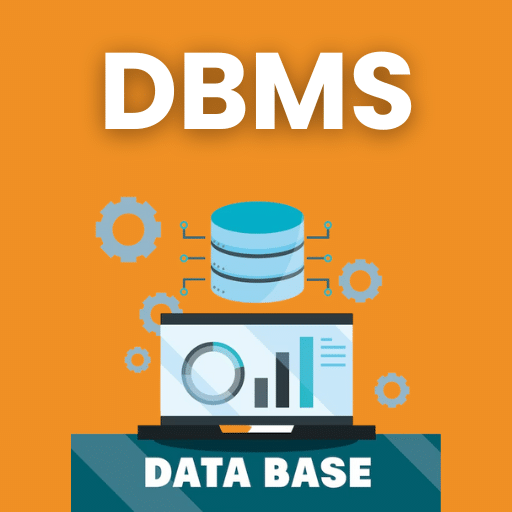Application layer Protocols | Computer Networks - Computer Science Engineering (CSE) PDF Download
DNS (Domain Name Server) | NetWorking.
DNS is a host name to IP address translation service. DNS is a distributed database implemented in a hierarchy of name servers. It is an application layer protocol for message exchange between clients and servers.
Requirement
Every host is identified by the IP address but remembering numbers is very difficult for the people and also the IP addresses are not static therefore a mapping is required to change the domain name to IP address. So DNS is used to convert the domain name of the websites to their numerical IP address.
Domain :
There are various kinds of DOMAIN :
- Generic domain : .com(commercial) .edu(educational) .mil(military) .org(non profit organization) .net(similar to commercial) all these are generic domain.
- Country domain .in (india) .us .uk
- Inverse domain if we want to know what is the domain name of the website. Ip to domain name mapping.So DNS can provide both the mapping for example to find the ip addresses of geeksforgeeks.org then we have to type nslookup www.geeksforgeeks.org.
Organization of Domain
It is Very difficult to find out the ip address associated to a website because there are millions of websites and with all those websites we should be able to generate the ip address immediately,
there should not be a lot of delay for that to happen organization of database is very important.
DSN record – Domain name, ip address what is the validity?? what is the time to live ?? and all the information related to that domain name. These records are stored in tree like structure.
Namespace – Set of possible names, flat or hierarchical . Naming system maintains a collection of bindings of names to values – given a name, a resolution mechanism returns the corresponding value –
Name server – It is an implementation of the resolution mechanism.. DNS (Domain Name System) = Name service in Internet – Zone is an administrative unit, domain is a subtree.
Name to Address Resolution
The host request the DNS name server to resolve the domain name. And the name server returns the IP address corresponding to that domain name to the host so that the host can future connect to that IP address.
Hierarchy of Name Servers
Root name servers – It is contacted by name servers that can not resolve the name. It contacts authoritative name server if name mapping is not known. It then gets the mapping and return the IP address to the host.
Top level server – It is responsible for com, org, edu etc and all top level country domains like uk, fr, ca, in etc. They have info about authoritative domain servers and know names and IP addresses of each authoritative name server for the second level domains.
Authoritative name servers This is organization’s DNS server, providing authoritative hostName to IP mapping for organization servers. It can be maintained by organization or service provider. In order to reach cse.dtu.in we have to ask the root DNS server, then it will point out to the top level domain server and then to authoritative domain name server which actually contains the IP address. So the authoritative domain server will return the associative ip address.
Domain Name Server
The client machine sends a request to the local name server, which , if root does not find the address in its database, sends a request to the root name server , which in turn, will route the query to an intermediate or authoritative name server. The root name server can also contain some hostName to IP address mappings . The intermediate name server always knows who the authoritative name server is. So finally the IP address is returned to the local name server which in turn returns the IP address to the host.
Simple Mail Transfer Protocol (SMPT)
Email is emerging as the one of the most valuable service in internet today. Most of the internet systems use SMTP as a method to transfer mail from one user to another. SMTP is a push protocol and is used to send the mail whereas POP (post office protocol) or IMAP (internet message access protocol) are used to retrieve those mails at the receiver’s side.
SMTP Fundamentals
SMTP is an application layer protocol. The client who wants to send the mail opens a TCP connection to the SMTP server and then sends the mail across the connection. The SMTP server is always on listening mode. As soon as it listens for a TCP connection from any client, the SMTP process initiates a connection on that port (25). After successfully establishing the TCP connection the client process sends the mail instantly.
SMTP Protocol
The SMTP model is of two type :
- End-to- end method
- Store-and- forward method
The end to end model is used to communicate between different organizations whereas the store and forward method is used within an organization. A SMTP client who wants to send the mail will contact the destination’s host SMTP directly in order to send the mail to the destination. The SMTP server will keep the mail to itself until it is successfully copied to the receiver’s SMTP.
The client SMTP is the one which initiates the session let us call it as client- SMTP and the server SMTP is the one which responds to the session request and let us call it as receiver-SMTP. The client- SMTP will start the session and the receiver-SMTP will respond to the request.
Model of SMTP system
In the SMTP model user deals with the user agent (UA) for example Microsoft outlook, netscape, Mozilla etc. In order to exchange the mail using TCP, MTA is used. The users sending the mail do not have to deal with the MTA it is the responsibility of the system admin to set up the local MTA. The MTA maintains a small queue of mails so that it can schedule repeat delivery of mail in case the receiver is not available. The MTA delivers the mail to the mailboxes and the information can later be downloaded by the user agents.
Both the SMTP-client and MSTP-server should have 2 components:
- User agent (UA)
- Local MTA
Communication between sender and the receiver :
The senders, user agent prepare the message and send it to the MTA . The MTA functioning is to transfer the mail across the network to the receivers MTA.
SENDING EMAIL:
Mail is send by a series of request and response messages between the client and a server. The message which is send across consists of a header and the body. A null line is used to terminate the mail header. Everything which is after the null line is considered as body of the message which is a sequence of ASCII characters.The message body contains the actual information read by the receipt.
RECEIVING EMAIL:
The user agent at the server side checks the mailboxes at a particular time of intervals. If any information is received it informs the user about the mail. When user tries to read the mail it displays a list of mails with a short description of each mail in the mailbox. By selecting any of the mail user can view its contents on the terminal.
Application Layer Protocols (DNS, SMTP, POP, FTP, HTTP)
An application layer protocol defines how an application processes (clients and servers) , running on different end systems, pass messages to each other. In particular, an application layer protocol defines:
- The types of messages, e.g., request messages and response messages.
- The syntax of the various message types, i.e., the fields in the message and how the fields are delineated.
- The semantics of the fields, i.e., the meaning of the information that the field is supposed to contain;
- Rules for determining when and how a process sends messages and responds to messages.
SMTP (Simple Mail Transfer Protocol):
- One of the most popular network service is electronic mail (e-mail).
- The TCP/IP protocol that supports electronic mail on the Internet is called Simple Mail Transfer Protocol (SMTP).
- SMTP transfers messages from senders' mail servers to the recipients' mail servers using TCP connections.
- Users based on e-mail addresses.
- SMTP provides services for mail exchange between users on the same or different computers.
- Following the client/server model:
- SMTP has two sides: a client side which executes on a sender's mail server, and server side which executes on recipient's mail server.
- Both the client and server sides of SMTP run on every mail server.
- When a mail server sends mail (to other mail servers), it acts as an SMTP client.
- When a mail server receives mail (from other mail servers) it acts as an SMTP server.
TELNET (Terminal Network):
- TELNET is client-server application that allows a user to log onto remote machine and lets the user to access any application program on a remote computer.
- TELNET uses the NVT (Network Virtual Terminal) system to encode characters on the local system.
- On the server (remote) machine, NVT decodes the characters to a form acceptable to the remote machine.
- TELNET is a protocol that provides a general, bi-directional, eight-bit byte oriented communications facility.
- Many application protocols are built upon the TELNET protocol
FTP (File Transfer Protocol):
- FTP is the standard mechanism provided by TCP/IP for copying a file from one host to another.
- FTP differs form other client-server applications because it establishes 2 connections between hosts.
- FTP is built on a client-server architecture and uses separate control and data connections between the client and the server.
- One connection is used for data transfer, the other for control information (commands and responses).
- It transfer data reliably and efficiently.
Multipurpose Internet Mail Extensions (MIME):
- It is an extension of SMTP that allows the transfer of multimedia messages.
- If binary data is included in a message MIME headers are used to inform the receiving mail agent:
- Content-Transfer-Encoding: Header alerts the receiving user agent that the message body has been ASCII encoded and the type of encoding used.
- Content-Type: Header informs the receiving mail agent about the type of data included in the message.
POP (Post Office Protocol):
- POP is also called as POP3 protocol.
- This is a protocol used by a mail server in conjunction with SMTP to receive and holds mail for hosts.
- POP3 mail server receives e-mails and filters them into the appropriate user folders. When a user connects to the mail server to retrieve his mail, the messages are downloaded from mail server to the user's hard disk.
HTTP (Hypertext Transfer Protocol):
- This is a protocol used mainly to access data on the World Wide Web (www).
- The Hypertext Transfer Protocol (HTTP) the Web's main application-layer protocol although current browsers can access other types of servers
- A respository of information spread all over the world and linked together.
- The HTIP protocol transfer data in the form of plain text, hyper text, audio, video and so on.
- HTTP utilizes TCP connections to send client requests and server replies.
Domain Name System (DNS):
- To identify an entity, TCP/IP protocol uses the IP address which uniquely identifies the connection of a host to the Internet.
- DNS is a hierarchical system, based on a distributed database, that uses a hierarchy of Name Servers to resolve Internet host names into the corresponding IP addresses required for packet routing by issuing a DNS query to a name server.
- However, people refer to use names instead of address. Therefore, we need a system that can map a name to an address and conversely an address to name.
- In TCP/IP, this is the domain name system.
- DNS in the Internet: DNS is protocol that can be used in different platforms.
- Domain name space is divided into three categories.
- Generic Domain: The generic domain defines registered hosts according, to their generic behaviour. Each node in the tree defines a domain which is an index to the domain name space database.
- Country Domain: The country domain section follows the same format as the generic domain but uses 2 characters country abbreviations (e.g., US for United States) in place of 3 characters.
- Inverse Domain: The inverse domain is used to map an address to a name.
Overview of Services
|
21 videos|115 docs|66 tests
|
FAQs on Application layer Protocols - Computer Networks - Computer Science Engineering (CSE)
| 1. What are application layer protocols in computer science engineering? |  |
| 2. How do application layer protocols facilitate communication between applications? |  |
| 3. Can you give some examples of application layer protocols used in computer science engineering? |  |
| 4. What is the role of application layer protocols in ensuring reliable communication? |  |
| 5. How do application layer protocols differ from transport layer protocols? |  |





















